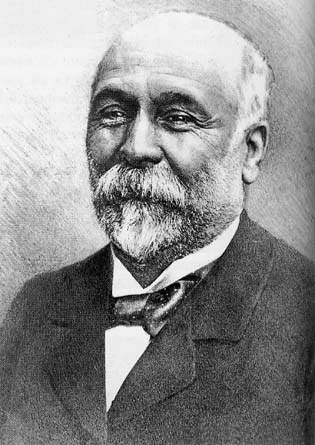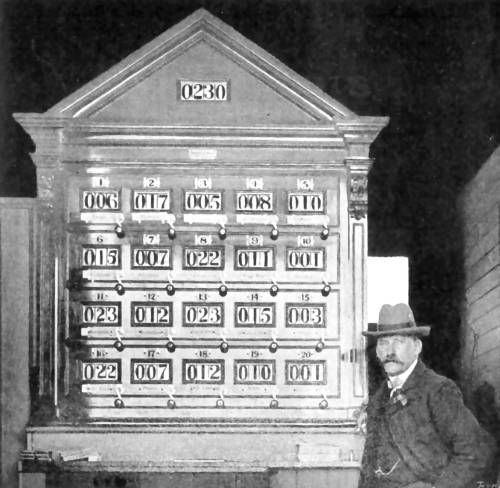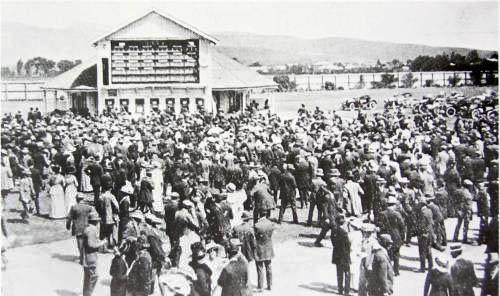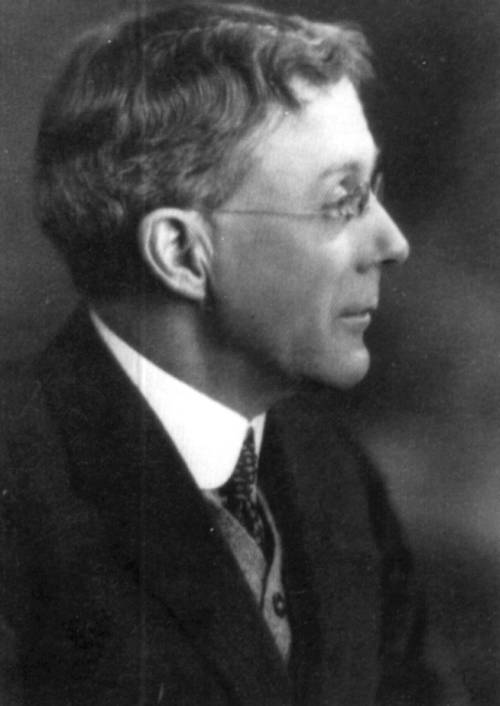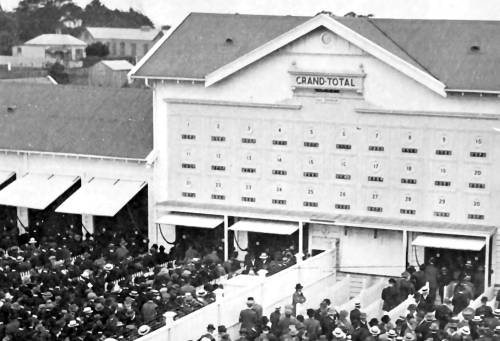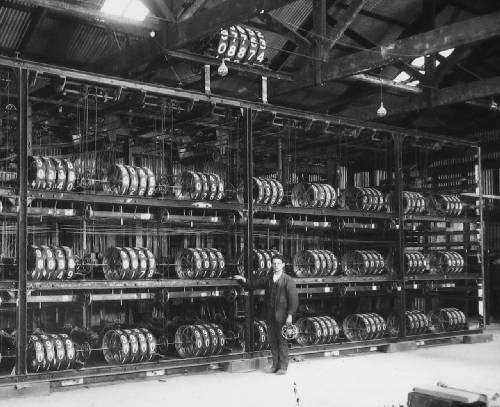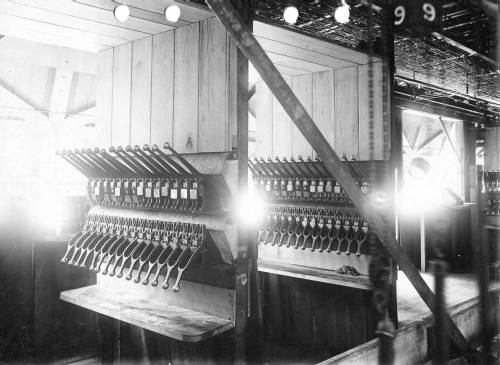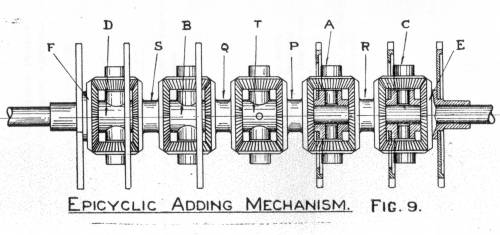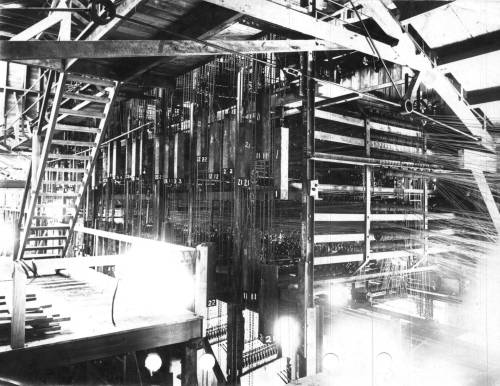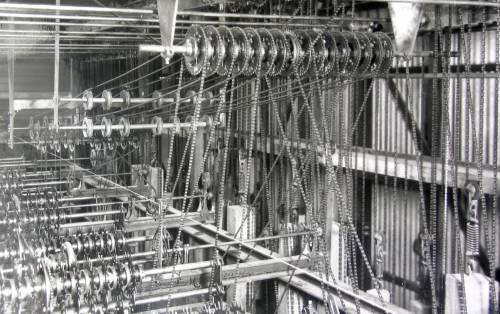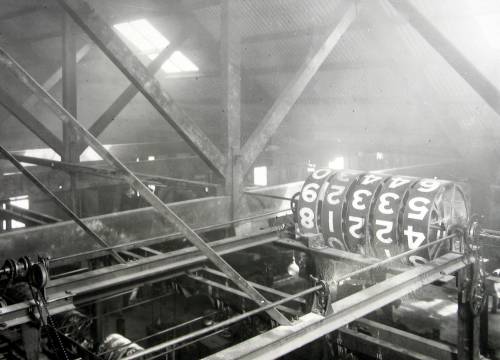The First Automatic Totalisator
Bob Doran
A Large-scale, Parallel, Mechanical Calculator
The world’s first parallel automatic totalisator machine was set operating at the Auckland Racing Club grounds at Ellerslie for the Easter meeting in 1913. Although it was an astoundingly large and complex machine it worked well and fulfilled the purpose for which it was designed. In one sense the machine was at the end of an era as it was entirely mechanical, not making use of electricity at all. However, it was also the first of what turned out to be a line of development that continued profitably throughout the century until replaced by modern computers in the 1970s. Here we will describe the machine—what it was trying to do and how it worked.
Pari-mutuel Betting and the Totalisator
The concept behind the totalisator was conceived in the 1860s by Joseph Oller, a resident of Paris, of Catalan origin.1 He proposed a gambling system, which became known as pari-mutuel (wagering among ourselves), where the amounts bet on all of the individual horses were totalled, reduced by a commission or fee, and distributed to the winners in proportion to the amount of each bet. Pari-mutuel gambling is an attractive alternative to fix-odds betting with a bookmaker—the gambler need have no concern that poor odds are being offered, or feel the need to ‘shop around’ for the best deal. However, the big disadvantage of pari-mutuel compared to the bookmaker’s fixed odds is that the gambler has no understanding of the return to expect from a bet. Oller overcame this defect by displaying, as the betting was taking place, the number of bets made on each horse and the grand total of all bets made for the race. Although not as simple as ‘paying 2 for 1’ the gambler can easily get a ‘feel’ for the magnitude of expected returns.
An implementation of the pari-mutuel system has come to be called a totalisator. The totalisator was extremely successful in France, and very profitable for Oller, but it was soon banned. However, the idea continued to spread outside France. By 1880, totalisators supported by machines were operating in Adelaide and Christchurch. In Australia Siegfried Franck promoted the use of a totalisator machine that he had imported from Germany, starting in 1879 at Randwick racecourse in Sydney.2 When pari-mutuel was again lawful in France in the 1880s it was also supported by machinery which is said to have come from Germany or Austria.
A totalisator is really a group of humans cooperating to make the pari-mutuel concept work. As such, a totalisator requires no special machinery at all. Oller’s first totalisators had no machinery—the totals were displayed using chalk on a slate. Even in 1950 when the New Zealand Totalisator Agency Board (TAB) was established to allow off-course betting, the implementation was entirely manual. Why then was machinery used at all?
The initial answer seemed to be that the totalisator is easily subject to fraud. A bet with a bookmaker is a straightforward contract. The gambler and the bookmaker both have noted the contract and there is no dispute as to the outcome if the bookmaker is reputable—if there is a problem such as the bookmaker refusing to pay or being over-extended then it is gross and obvious. With the totalisator things are much less straightforward and there are many ways that the operator (in particular) can cheat. For example, inventing extra bets on unfavoured winners can reduce the payout, as can recording the bet on the horse but not on the grand total. Changing the totals while, or after, the race is run is another possibility.
Initially, totalisators were considered to be in competition with bookmakers and were operated by one man or a small team. The first machines were human sized. Some were quite small and portable, others more like the size of a piano. They were brought to the race tracks on race days and offered their form of gambling as an alternative. The initial purpose of using this machinery was to give a feeling of security to the gambler. The counts of bets were shown in large, easy-to-read, professional-looking fonts rather than handwriting. The typical machine would have levers to increment the count on each horse and to increment the grand total as well in the sight of the gamblers. Some machines would have locks set so that there could be no tampering while the race was being run.
Of course, this feeling of security is ill-founded as the machinery doesn’t stop the determined cheat—in the history of the Auckland Racing Club the tale is told of the operators of the very first machine at Ellerslie racecourse in Auckland in 1880 being caught cheating by inventing extra bets on outsiders.3 True security can only come from the totalisator being supervised or operated by a trusted authority. The way that progress was made varied from country to country but gradually the use of totalisators became restricted to racing clubs. A human system had to be set up to control each totalisator. Although some large racing clubs ran multiple totalisators there were clear advantages to expanding the small totalisators, making them as comprehensive as possible, only one for the whole race track being the goal. In the first few decades of the 20th century it became common to have a single sanctioned totalisator, often operated from a specially-designed building that included displays of the amounts being bet and special booths or windows for selling tickets. There are many of these totalisator buildings still surviving at the racetracks around New Zealand.
Having an official organization supervise the totalisator gave it confidence in the eyes of the gambling public but the increased size of the operation also led to serious new problems. It is hard nowadays to comprehend how important racing was when there were few other outlets for entertainment. In a city the size of Auckland crowds of multiple 10s of thousands were common. A single totalisator display just could not keep up with the volume of bets being made.
Totalisators, being controversial, were subject to regulation. One common rule was that, to avoid fraud, the totalisator had to be balanced before a race could start. Although this was possibly very quickly if well managed, it often was not and the start of the race had to be delayed, by up to 15 minutes in some cases. Additionally, with large numbers of gamblers and bets recorded by possession of a ticket the threat of fraud by the customer became much more serious. There was a great need for some secure method, less expensive in staff and simple to operate, of providing timely totals in the face of many thousands of gamblers.
Another aspect of regulation helped fund the solution. It was common for the racing club to be given the monopoly over betting on track. Bookmakers were banned and the only legal way of gambling was the racing club totalisator. This monopoly provided a bountiful stream of revenue for the clubs and gave them the wherewithal to pay for improvements to the totalisators themselves.
The First Automatic Totalisator
Because of the obvious need for improvement there were many attempts to automate the totalisator. One, operating in Brisbane, used marbles running in tracks to represent bets! However, there was one line of development that was much more successful than others and eventually came to dominate the business. In 1909 George Julius (later, Sir George), English born, raised and schooled in New Zealand (a graduate of Canterbury University, son of Bishop Julius), though Australian resident, filed a patent application for his totalisator machinery.4 His ideas were first implemented as a totally mechanical machine at the Ellerslie race course in Auckland, New Zealand, in 1913. The company started by Julius, ‘Automatic Totalisators Limited,’ continued to refine and develop their machinery (called the Premier Totalisator) for the next 50 years.
The purpose of the totalisator machine was to display in large readable figures, in ‘real time’ as bets were made on the next race, the total number of ‘unit bets’ made on each horse in the race and the grand total of all such bets. The unit or smallest bet for the first Ellerslie machine was 10 shillings. Tickets recording a bet on any horse in the race could be purchased from any one of the ticket vending windows—for the first machine there were 30 ticket-vending stations, though some would handle only 10 shilling bets and others only double-sized bets of 20 shillings (one pound.) The totalisator design had to allow for bets to be placed on the same horse at the same instant at all 30 ticket windows without any bets being lost. The totals of bets had to be recorded completely accurately and with no significant delay so that the race could be run immediately after the totalisator was closed and the dividend for the winning bet (only simple bets on winners were catered-for) calculated accurately. Although the arithmetic performed by the totalisator was trivial—merely incrementing totals by 1 (or by 2)—handling of the parallel operation, the large number of bets made in a short time and displaying the totals in the large, were design challenges.
The Ellerslie totalisator could also handle up to 30 horses in each race. The total bets for each of the 30 horses were displayed in three rows of 10, the horse numbers being written above the displays. Each of the displays was a 4-digit mechanical counter comprising four wheels each having the 10 digits in large letters on the perimeter. Above the centre of the horse displays was a 5-digit display of the grand total of all bets made on all horses. The displays were at the front of the upper floor of a specially designed two-story building.
Behind the displays was a large room that contained the central machinery. The displays are actually part of the machine itself—this allows us to get a feel for the size of the machinery which occupied the entire first floor room. The scale is apparent in the photo taken of the machine when it was being tested and assembled in Sydney.
The race tickets were sold on the ground floor. Pre-printed tickets were issued by hand. To record the bet, the operator pulled one of 30 levers, one for each horse, referred to as ‘beer pump handles.’ Each lever was connected to the central machinery with a unique steel wire that communicated the ‘tug’ signifying a bet being made. The 900 wires had all to be kept taught and free-running over pullies. Photo 7 shows two of the ticket-issuing stations as installed at Ellerslie—the rats-nest of wires in the ceiling space can be glimpsed on the upper right.
The task of the central machinery was to keep track of bet totals for each horse, allowing for 30 bets on the one horse to be registered simultaneously by 30 wires being pulled at the same time. To solve this problem Julius introduced a device he called a ‘shaft adder’. He later gave a drawing for a improved version, though based on the same principles.5
There are sets of epicyclic gears or differentials mounted on a shaft, each free to rotate around the shaft. Each of these differentials is fixed to a toothed escapement wheel (the thin vertical boxes in the diagram, viewed edge-on.). The differentials are prevented from rotating by an escapement mechanism (as in a clock) that may be operated to allow them to turn one step. There is another differential in the middle of the shaft that has rotational force applied to it—in the diagram this central differential is pinned to the internal shaft which is being urged to rotate—in the Ellerslie machine the central differential had an attached toothed wheel was driven by a chain. By operating any escapement its differential is allowed to rotate one step and this causes the central differential to advance one step and so the central shaft or chain also advances one step representing one bet. Any or all of the differentials may be stepped at the same time and the combined rotation comes through to the centre, thus allowing multiple bets on the same horse to be recorded simultaneously.
There is one shaft adder for each horse. To handle 30 horses the Ellerslie machine had three rows of ten adders—each adder was situated behind its display counter. To handle 30 ticket stations (the same number of horses and ticket stations is co-incidental) each shaft adder needed 30 differentials and escapements, one escapement operated by each ticket station. In fact, each adder was split into two sections—one shaft of 18 escapements that represented a 10 shilling bet as 1/20th of a revolution of the shaft and another of 12 escapements that recorded 20 shilling bets. The rotations of the two subshafts are combined, the 20 shilling rotations being doubled, to impart a final rotation to a shaft that thus represents 20 unit bets for each rotation. Nowadays, we would probably call the shaft adder a ‘parallel to serial converter’ in that parallel or simultaneous ‘tugs’ on wires are converted to a continuous rotation corresponding to the number of tugs. Photo 9 shows one of the shaft adders with the ‘output’ from the device being the rotation of the central shaft.
The central shaft is being driven to rotate, with the escapements permitting rotation only when a bet is to be recorded. To provide the motive force to the shafts the first machine used clockwork. The shafts are driven by heavy weights as in a grandfather clock but on a much grander scale. In the photo of the back of the machine installed at Ellerslie (Photo 10) some of the weights can be seen, as can some of the wires coming in to the machine from ticket stations on the right.
As well as total bets for each horse, it was necessary to form the grand total of all bets. In this first machine the output rotations from the horse adders are added together with special shaft adders. The central shaft of each adder pair is connected by a chain to the grand total adders. The 15 horses to the left and the 15 to the right are each totaled separately and then these are combined to form the grand total at the top of the machine. In photo 11 the left half grand total shaft adder is in the centre. The sum is carried by the chain heading up to the right to the top of the machine from the centre of the shaft.
At the top of the machine the rotations from the left and right are combined on one shaft, the rotation of which represents the grand total, again 1/20th of a rotation for each unit bet. This can be seen in photo 12.
The total bets on each horse, and the grand total bets, are represented as rotations of shafts. These rotations now have to be converted into a visible total. This was done by the counters that would increment their display by 1 for each 1/20th of a rotation on the shaft. Unlike nowadays, where a display is a remote device that receives electrical signals, these counters were actually integral parts of the machine—the public glimpsed the totals through windows exposing just a small part of the machine. In the photo, the input shaft to the grand total counter can be seen going in to the left of the counter at the units position. The other 30 counters had similar inputs directly from the shaft adders for each horse.
The counters were simple in concept. The rotation of the input shaft was used to allow the units drum to rotate—it was given a separate source of rotational power, the input shaft to the right in photo 12. Each complete revolution of the units drum would allow the tens drum to rotate one 10th of a revolution. And so on for 100s and thousands.
Although simple in concept, in practise the counters presented great difficulties. The wheels had to be large so that the totals were readable from afar. The signal coming in could have peaks that would start and end suddenly. To show all of the bets the units drum would have to be able to rotate quite quickly but it was too massive to start or stop suddenly. Julius had to invent ‘buffer’ mechanisms that would accept the rotation input signals without any loss while the counters built up speed. There also needed to be a means of gradually slowing the counter when the input stopped. It is unclear what exactly was this mechanism for the first machine, though it appears that the buffer was some kind of coiled spring.
Success of the Machine and its Sequel
The first Ellerslie totalisator must have been the largest mechanical calculating machine ever built. It was not until large mainframe computers arrived in the late 1960s that there was any computing device to match it in size. It was so complex that it is hard to credit that it could operate accurately and reliably.
However, although there were teething problems, the machine seems to have worked well, as detailed in the immediate newspaper reports (see appendix). The ticket issuers were not to the satisfaction of the Auckland Racing Club (ARC) and were upgraded to make them less susceptible to fraud. Julius was very loathe to make this change because he had already spent £11,000 on a machine sold to ARC for £4,000.
The machine must have been tricky to maintain. By the time it was completed Julius had a range of better ideas to try. He addressed the ARC committee in 1914 trying to get them to upgrade but he was asked to complete the machine he had contracted to build.6
By 1917 the advantages of the next model that connected ticket-selling machines electrically were obvious (including being able to put the ticket machines a long way from the machine) and a decision was made to purchase a new machine which was operating by the end of 1918. So the first automatic totalisator, the only one to be fully mechanical, was in use for only 5 years.
As detailed in the press report, the totalisator gathered £41,514 on its first big day. That represents 83,000 bets which corresponds to a volume of more than 10,000 bets per race at peak. The machine could handle Ellerslie but was not adequate for the much larger race tracks overseas. Julius set himself the goal of making totalisators that could handle up to one million bets in the half hour between races. With major improvements, automatic ticket issuing machines and mechanical multiplexors to share escapements between multiple ticket issuers, ATL went on to produce machines of much larger capacity. By the end of the 1920s ATL machinery was installed at race tracks throughout the world with the really big sites being Longchamps in Paris and White City in London. Longchamps had 270 ticket machines and could certainly handle multiple 100s of thousands of unit bets for each race.
The technology improvements also made it possible to make totalisators that were less expensive, making them suitable for smaller race tracks. Mobile machines on trucks, or totemobiles, brought the ATL machines to remote country sites. Widening the market further were innovations that showed expected dividends rather than horse totals (calculated with analogue dividing machines), and different types of bets were made possible, including the double and the place bets. ATL developed into a company that remained profitable and in a dominant position until computers made the electromechanical machines obsolete in the 1970s.
Appendix
This extract is from The New Zealand Herald, Tuesday, 25 March, 1913. It describes the operation of the first mechanical totalisator, initiated at the Easter meeting of the Auckland racing Club, 22nd and 24th March 1913.
THE NEW TOTALISATOR
The new totalisator machine was used for the meeting with marked success. It was installed in time for the Christmas meeting, but for various causes it was deemed inadvisable to use it until the Easter meeting. A small knowledge of the extraordinary demands that the work of a totalisator imposes upon its parts shows clearly how mechanism might have failed in a dozen ways. But in the meantime alterations have been made, the machine has become more familiar to its operators, and it worked on Saturday and yesterday with fine regularity, and to everybody’s satisfaction.
The chief problem in making a purely mechanical totalisator is to arrange matters so that if two or three or a dozen of the operating clerks all issue tickets on the same horse, the full number shall be recorded in the proper place. That the problem is a difficult one is shown by the fact that this machine, the invention of Mr Julius, is believed to be the only one that achieves the object by means of gearing, instead of with falling marbles, or some such device. The aggregating is done by a very pretty association of crown wheels and epicyclic gear, which, mechanically, is infallible.
The second obstacle of importance was raised by the fact that, in view of the facility with which many investments could be put upon a single horse at a time, the machinery was apt to be run at times so fast that the starting and stopping of the rotating wheels, which, in spite of their light construction, have considerable inertia, set up almost destructive strains and shocks. This trouble has been overcome with an ingenuity altogether admirable. The counter releases a spring-driven gear, which can go as fast as it will irrespective of the motion of the wheel on which the figures are shown to the public, and the wheel simply runs leisurely and smoothly ahead until it overtakes the gear. Even then the wheel, free to make several rapid revolutions, would be difficult to stop at the right place if its speed were not controlled by a governor. There is a ‘relay drive,’ and a governor for each of the 30 single horse recorders, and another for the grand total mechanism. The totalisator in full operation presents a remarkable appearance from within, for the machine is an enormous structure, the greater part of which is occupied with the releasing wires and the driving gear. Every time a ticket is issued the clerk pulls a lever corresponding with the number of the horse. The lever pulls a long wire cord; the cord releases the counter. The gearing revolves a little, and the counter wheels turn. Sometimes the wheels move at long intervals; and then, as a horse becomes popular, its set of wheels will commence to spin frantically, so that one might imagine the count terribly apt to fail. But the ‘tens’ tot up the units, the ‘hundreds’ go up in their turn; and grand total wheels turn phlegmatic somersaults, and perform mathematical prodigies. The machine was originally intended to punch the tickets with the number of the horse upon which they are issued, but so far the punching mechanism is not in use, and it is probable that an addition will be made so that tickets will be issued from magazines, operated by the levers simultaneously with the recording of the investments.
Speculation was very brisk during the afternoon, with investments reaching to £41,514 10s, compared with £38,026 10s on the concluding day of last year, and making £74,053 for the meeting, against £68,947 10s in 1912, an increase of £5,105 10s.
Acknowledgements
Thanks to Brian Conlon for information from his website devoted to Automatic Totalisators Ltd. (http://members.ozemail.com.au/~bconlon/), to Matthew Connell for providing access to ATL archives at the Power House Museum and to Auckland Racing Club for access to their records.
Image Credits
Images 4, 7 and 10 appear courtesy of Brian Conlon's ‘Totalisator History’.
Images 6, 9, 11, and 12 appear courtesy of the ATL archives, Power House Museum, Sydney.
Notes
1 ‘L’Homme de la belle époque’ by Ferran Canymeres, Les Editions Universelles, Paris, 1946
2 Martin Painter and Richard Waterhouse. ‘The Principal Club. A History of the Australian Jockey Club’
3 The history of the Auckland Racing Club ‘A Noble Breed’ by William Mackie
4 Julius Specifications and Drawings. Totalling etc. Apparatus ‘Automatic Type’ 1909. From Automatic Totalisators Ltd. Archives held at the Power House Museum. Sydney
5 Julius, George Alfred. ‘Mechanical Aids to Calculation’ Institution of Engineers, Australia. Sydney. 1920
6 The minutes of the Auckland Racing Club Committee, 1912–1919

